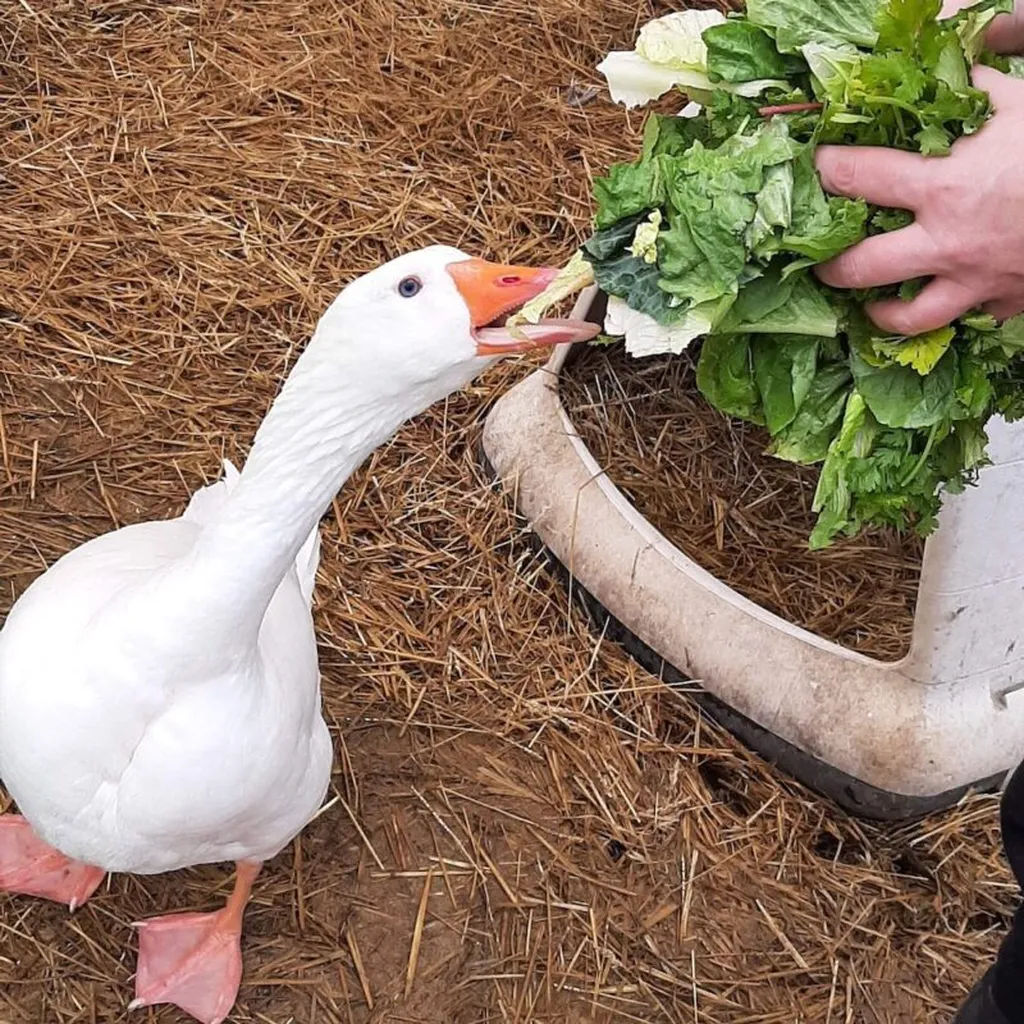In the quest to optimize livestock nutrition and health, a recent study published in *Animal Microbiome* has shed light on the significant impacts of dietary fiber sources on meat geese. The research, led by Yang Liu from the College of Bioscience and Biotechnology at Hunan Agricultural University, explores how different solubilities of dietary fiber can influence growth performance, nutrient metabolism, and intestinal health in geese.
The study involved 400 meat geese, divided into four treatment groups. Each group received a different diet: a basal diet (BD), and BD supplemented with wheat bran (high soluble dietary fiber source, HS), alfalfa meal (medium soluble dietary fiber source, MS), or bamboo meal (low soluble dietary fiber source, LS). The results were striking. Dietary supplements of fiber sources improved the growth performance of geese by increasing final body weight and average daily weight gain, while decreasing the feed to gain ratio. Notably, the high soluble fiber source (HS) treatment decreased the feed to gain ratio compared to the low soluble fiber source (LS) treatment.
“Our findings indicate that dietary fiber sources, particularly those with high solubility, can significantly enhance the growth performance of meat geese,” said Yang Liu, the lead author of the study. This improvement in growth performance is not just a matter of efficiency; it has substantial commercial implications for the agriculture sector. Farmers could potentially reduce feed costs while increasing the output, making the production process more economically viable.
The study also delved into the effects of dietary fiber on nutrient metabolism. The HS and MS treatments decreased the levels of uric acid and triglyceride in the serum compared to the BD and LS groups. Additionally, the HS treatment decreased the high-density lipoprotein cholesterol level. These metabolic improvements suggest that high soluble fiber sources can play a crucial role in managing the overall health and nutrient metabolism of geese.
One of the most intriguing aspects of the research is its focus on immune function and antioxidant capacity. The study found that dietary fiber supplements, especially the HS treatment, improved the immune function of the ileum and cecum by decreasing the levels of interleukin-10 and interleukin-1β, and increasing the level of secretory immunoglobulin A. This enhancement in immune function is a significant finding, as it can lead to healthier livestock with a lower incidence of diseases, which is a major concern for farmers.
Furthermore, the study highlighted the positive impact of dietary fiber on antioxidant capacity. The HS and MS treatments increased the activities of catalase (CAT), superoxide dismutase (SOD), and total antioxidant capacity (T-AOC), while decreasing the malondialdehyde (MDA) level. These results suggest that dietary fiber can help in reducing oxidative stress, which is beneficial for the overall health and well-being of the geese.
The research also examined the gut microbiota composition among the different treatment groups. The HS treatment induced the enrichments of Butyricicoccus and Gemmiger, which were correlated with improvements in growth performance, lipid and fatty acid metabolisms, and intestinal condition. This finding underscores the importance of gut microbiota in livestock health and performance, an area that has been gaining increasing attention in recent years.
The implications of this research are far-reaching for the agriculture sector. As Yang Liu noted, “Our study suggests that highly soluble fiber sources might be preferable to use in geese production.” This could lead to a shift in feeding practices, with farmers opting for more soluble fiber sources to enhance the growth and health of their livestock. The potential for reduced feed costs and improved health outcomes makes this a promising area for further research and commercial application.
In conclusion, this study provides valuable insights into the role of dietary fiber in livestock nutrition and health. The findings suggest that carefully selecting fiber sources with different solubilities can significantly improve the growth performance, nutrient metabolism, and intestinal health of meat geese. As the agriculture sector continues to seek ways to optimize production and reduce costs, this research offers a promising avenue for exploration. The study, published in *Animal Microbiome*, was led by Yang Liu from the College of Bioscience and Biotechnology at Hunan Agricultural University, and it represents a significant step forward in our understanding of livestock nutrition and health.

